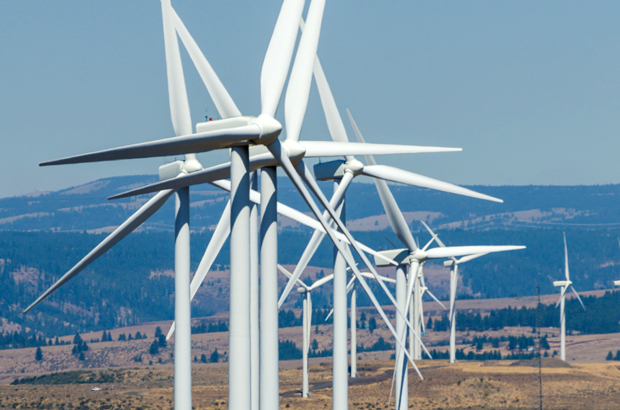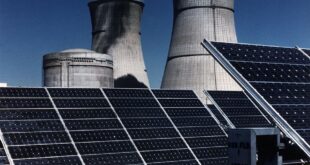Clean energy sources are a crucial aspect of our efforts to transition to a more sustainable future. As the world continues to face the challenges of climate change and resource depletion, the need for clean, renewable energy sources becomes increasingly pressing. Fortunately, there are a number of clean energy sources that are available to us today, and these sources are becoming more accessible and affordable as technology advances.
One of the most well-known sources of clean energy is solar power. Solar energy is produced by capturing the energy from the sun using photovoltaic (PV) panels. These panels are made up of a number of small cells that convert sunlight into electricity. The electricity can then be used to power homes, businesses, and other types of infrastructure. One of the main benefits of solar power is that it is completely renewable and has no emissions or pollution associated with its use. Additionally, the cost of solar panels has been steadily declining in recent years, making this a more affordable option for individuals and businesses alike.

Another source of clean energy is wind power. Wind energy is generated by capturing the energy of wind using turbines. These turbines convert the kinetic energy of the wind into mechanical energy, which can then be used to generate electricity. Wind turbines can be used in a variety of settings, from small-scale applications like individual homes or farms to large-scale wind farms that can generate electricity for entire communities. Like solar power, wind power is completely renewable and has no emissions or pollution associated with its use.

Hydroelectric power is another source of clean energy that has been in use for many years. Hydroelectric power is generated by using the energy of flowing water to turn turbines and generate electricity. This can be done in a variety of ways, including using large dams to control the flow of water, or by using smaller-scale turbines in streams or rivers. Hydroelectric power is also renewable and has no emissions or pollution associated with its use. However, there are concerns about the impact of large dams on ecosystems and wildlife, so care must be taken in the development and use of this technology.
Geothermal energy is another type of clean energy that is becoming more widely used. Geothermal energy is generated by harnessing the heat that is naturally produced by the Earth’s core. This heat can be used to generate electricity or to provide heating and cooling for buildings. Geothermal energy is renewable and has no emissions or pollution associated with its use. However, it is not as widely available as some of the other clean energy sources, and its use is often limited to areas with significant geothermal activity.
Finally, there are a number of emerging technologies that hold promise for clean energy production. These include biofuels, which are derived from renewable organic materials such as plants or algae, and tidal power, which is generated by harnessing the power of ocean tides. While these technologies are still in the early stages of development, they offer exciting possibilities for the future of clean energy.
There are many benefits associated with the use of clean energy sources. Perhaps the most obvious benefit is the reduction in greenhouse gas emissions and other pollutants associated with traditional energy sources such as fossil fuels. By using clean energy sources, we can reduce our impact on the environment and help mitigate the effects of climate change. In addition, many clean energy sources are renewable, meaning that they can be used indefinitely without depleting natural resources. This makes them a more sustainable option than traditional energy sources.
There are also economic benefits to the use of clean energy sources. As the cost of renewable energy technologies continues to decline, they are becoming more accessible and affordable for individuals and businesses alike. This can lead to a reduction in energy costs over time, as well as the creation of new jobs in the renewable energy sector. In addition, the use of clean energy sources can help to reduce our dependence on foreign oil and other fossil fuels, which can help to stabilize energy prices and improve energy security.
Another benefit of clean energy sources is that they can be used in a decentralized manner, allowing for greater independence and resilience. For example, solar panels can be installed on individual homes or businesses, allowing them to generate their own electricity and reduce their reliance on the traditional power grid. This can be particularly important in areas that are prone to power outages or where access to electricity is limited.
Despite the many benefits of clean energy sources, there are still challenges to their widespread adoption. One of the main challenges is the upfront cost of installing renewable energy technologies. While the cost of these technologies has been declining in recent years, they still require a significant investment upfront. This can be a barrier for individuals and businesses that may not have the resources to make this investment.
Another challenge is the intermittency of some renewable energy sources. For example, solar power is only generated during daylight hours, and wind power is dependent on the availability of wind. This can make it difficult to rely solely on these sources for energy production, particularly in areas where the weather may be unpredictable. However, advances in energy storage technologies are helping to address this challenge, by allowing excess energy to be stored for use when it is needed.
There are also concerns about the impact of renewable energy technologies on wildlife and ecosystems. For example, wind turbines can pose a risk to birds and bats, and large-scale solar farms may displace wildlife habitats. It is important to carefully consider the potential impact of renewable energy technologies on the environment and to take steps to minimize these impacts.
Despite these challenges, the benefits of clean energy sources are clear. As we continue to face the challenges of climate change and resource depletion, it is clear that we must transition to a more sustainable energy system. By investing in clean energy sources, we can reduce our impact on the environment, improve energy security, and create new economic opportunities. With continued innovation and investment, clean energy sources have the potential to transform the way we power our world
 E340 USA – Economy – HVAC – Energy – Health – Education
E340 USA – Economy – HVAC – Energy – Health – Education


2 comments
Pingback: Solar Energy Vs Wind Energy! – E340
Pingback: How important is the air filter for the central HVAC system? - E340